India is a multicultural and religiously diverse nation. The languages, dialects, and cultural customs of each Indian state are unique in their own way. In India, several communities and religious organizations celebrate a number of different festivals. Some holidays are associated with the state and local communities, while others are observed in accordance with religious beliefs.
Festivals can be celebrated in many ways, including feasting, dancing, singing, wearing traditional clothing, and performing religious rituals or ceremonies. They often provide an opportunity for people to come together, strengthen social bonds, and celebrate their shared heritage.
In addition to their cultural and social significance, festivals can also have economic benefits, particularly for local businesses that may see an increase in tourism and sales during festival periods.
1. Diwali
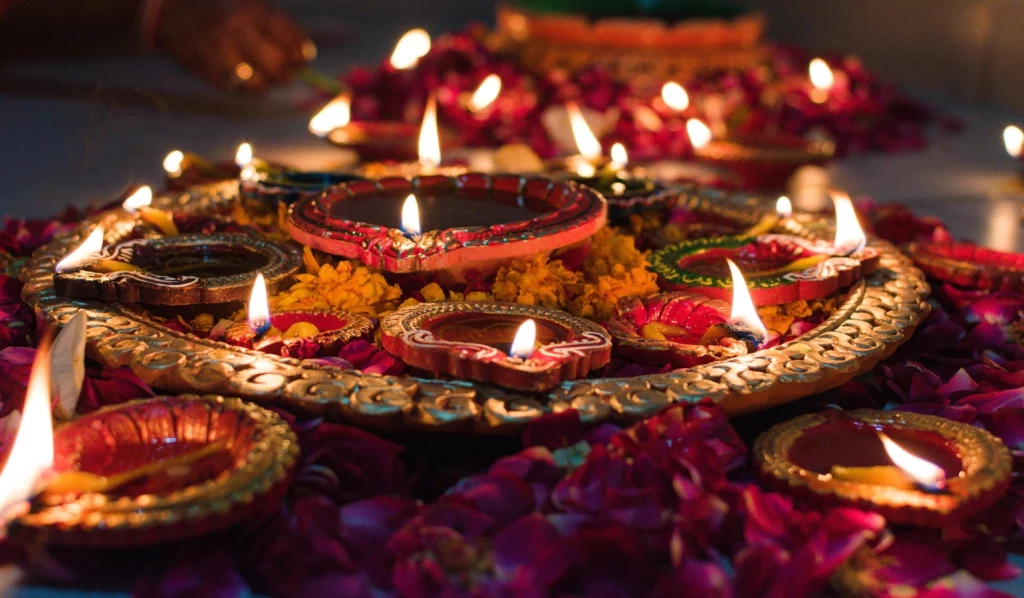
Diwali, also known as Deepavali, is one of the most popular festivals in India and is celebrated by Hindus, Sikhs, Jains, and some Buddhists. It usually falls in October or November, and the date varies each year according to the Hindu calendar.
Diwali is also known as the “Festival of Lights” and is celebrated over a period of five days. The festival is associated with the triumph of light over darkness, good over evil, and knowledge over ignorance.
During Diwali, people decorate their homes with lights, candles, and diyas (oil lamps) to symbolize the victory of good over evil. They also clean their homes and wear new clothes, and prepare special foods and sweets.
One of the most important rituals during Diwali is the lighting of fireworks, which illuminates the night sky with bright and colorful lights. The festival also includes the exchange of gifts and greetings with family and friends.
For Hindus, Diwali is associated with the story of Lord Rama, who returned to his kingdom Ayodhya after 14 years of exile and defeating the demon king Ravana. It is believed that the people of Ayodhya lit lamps to welcome him back, and that tradition has continued to this day.
Overall, Diwali is a time of joy, happiness, and celebration, and it is celebrated with great enthusiasm across India and in many other parts of the world where Indian communities reside.
2. Holi
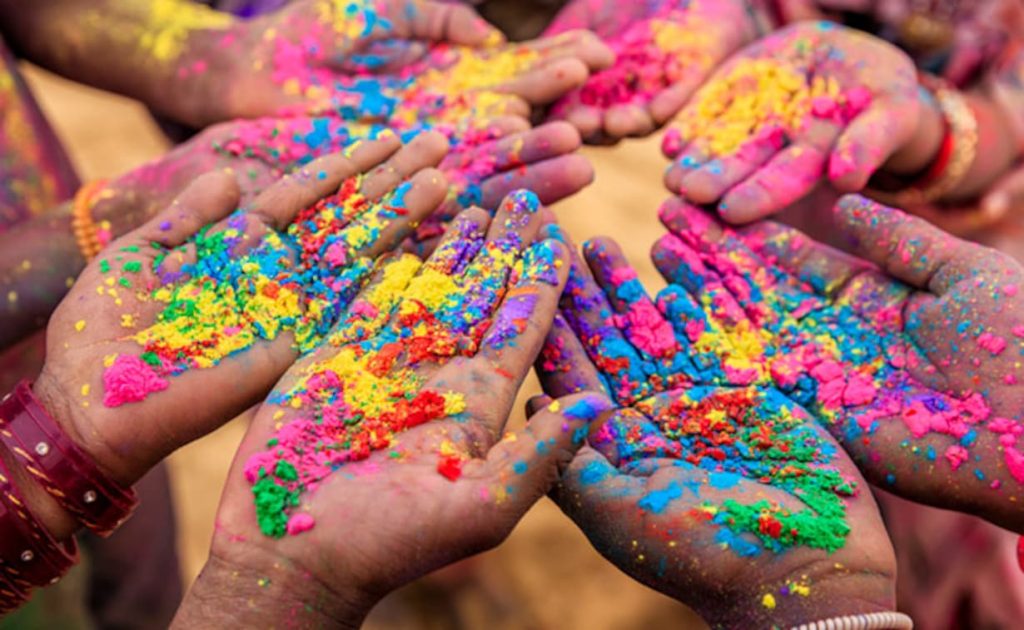
Holi is a festival of colors and is celebrated in India and other parts of the world, particularly by Hindus. It is usually celebrated in late February or early March and marks the beginning of spring.
The festival is known for the use of colored powders and water, which people throw at each other. This is said to symbolize the joy and happiness of spring, and to celebrate the triumph of good over evil.
On the day of Holi, people gather with friends and family, and throw colored powder at each other, while singing and dancing to traditional music. People also enjoy special food and drinks, particularly sweets and drinks made with milk and nuts.
The festival is associated with the legend of Lord Krishna and his beloved Radha. According to the legend, Lord Krishna was jealous of Radha’s fair complexion and used to playfully throw colored powder on her to make her complexion similar to his own. This practice became a tradition, and over time, it evolved into the colorful festival of Holi.
Holi is also associated with the legend of Holika, who was the sister of the demon king Hiranyakashipu. According to the legend, Holika tried to kill Hiranyakashipu’s son Prahlad by burning him alive. However, Prahlad was saved by Lord Vishnu, and Holika was burned instead. This story is said to represent the victory of good over evil.
Overall, Holi is a vibrant and colorful festival that celebrates the arrival of spring and the joy of life. It is celebrated with great enthusiasm and is a time for people to come together and enjoy each other’s company.
3. Durga Puja
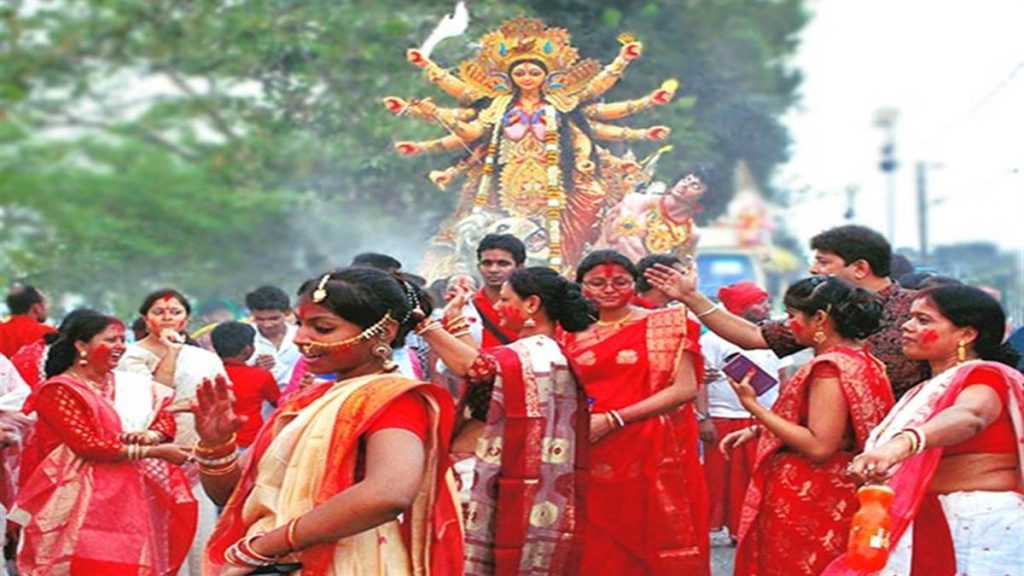
Durga Puja is a major Hindu festival celebrated in India, particularly in the eastern states of West Bengal, Assam, and Tripura. It is a ten-day festival that usually falls in the months of September or October.
Durga Puja is dedicated to the worship of Goddess Durga, who is considered to be the mother of the universe and the embodiment of divine power. According to Hindu mythology, Goddess Durga represents the triumph of good over evil, and her victory over the demon king Mahishasura is celebrated during the festival.
The festival is marked by the installation of large and elaborately decorated temporary structures called pandals, which house the idols of Goddess Durga and her family. The pandals are often designed around a specific theme, and are a major attraction for visitors.
The festival involves elaborate rituals and ceremonies, including the recitation of hymns and prayers, and the offering of flowers, fruits, and sweets to the goddess. On the last day of the festival, the idols of Goddess Durga and her family are taken in a procession to a nearby river or lake, and immersed in the water. This is known as visarjan, and is believed to symbolize the return of the goddess to her heavenly abode.
Durga Puja is a time of joy and celebration, and is marked by cultural events such as music, dance, and theater performances. The festival is also an occasion for people to come together and enjoy traditional food and sweets.
Overall, Durga Puja is a vibrant and colorful festival that celebrates the triumph of good over evil, and is an important part of the cultural and religious heritage of India.
4. Eid al-Fitr

Eid al-Fitr, also known as the “Festival of Breaking the Fast,” is a major Islamic festival celebrated by Muslims all over the world. It marks the end of the month-long fasting period of Ramadan, which is considered to be one of the holiest months in the Islamic calendar.
Eid al-Fitr is celebrated on the first day of Shawwal, the tenth month of the Islamic calendar. The date of the festival varies each year, as it is based on the sighting of the new moon.
The festival begins with the offering of the Eid prayer in mosques or open spaces. People then gather with family and friends to share a meal and exchange gifts. It is also customary to give charity to the poor and needy during Eid al-Fitr.
Eid al-Fitr is a time of joy and celebration, and is marked by the wearing of new clothes and the decoration of homes with lights and other decorations. Traditional foods and sweets are prepared and shared with family and friends, and people visit each other to exchange greetings and well wishes.
The festival has special significance for children, who often receive gifts and money from family and friends during Eid al-Fitr. Children also enjoy playing with traditional toys and games, and participating in cultural events and activities.
Overall, Eid al-Fitr is a time of renewal and gratitude, and is an important part of the Islamic cultural and religious heritage. It is a time for people to come together and celebrate their shared faith and values, and to reflect on the blessings of the past month of fasting and spiritual devotion.
5. Ganesh Chaturthi

Ganesh Chaturthi is a major Hindu festival celebrated in India, particularly in the western state of Maharashtra. The festival is dedicated to the worship of Lord Ganesha, who is one of the most beloved deities in the Hindu pantheon.
Ganesh Chaturthi is celebrated for a period of ten days, usually in the months of August or September. During this time, people install large and elaborately decorated idols of Lord Ganesha in their homes, public places, and temples. The idols are often designed around a specific theme, and are a major attraction for visitors.
The festival involves elaborate rituals and ceremonies, including the recitation of hymns and prayers, and the offering of flowers, fruits, and sweets to Lord Ganesha. On the last day of the festival, the idols of Lord Ganesha are taken in a procession through the streets, accompanied by music and dancing. The procession culminates in the immersion of the idols in a nearby river or lake, known as visarjan.
The festival is a time of joy and celebration, and is marked by cultural events such as music, dance, and theater performances. Traditional foods and sweets are prepared and shared with family and friends, and people visit each other to exchange greetings and well wishes.
Ganesh Chaturthi is an important festival for Hindus, and is considered to be a time for renewal and the overcoming of obstacles. Lord Ganesha is revered as the remover of obstacles, and the festival is an occasion for people to seek his blessings and guidance in their personal and professional lives.
Overall, Ganesh Chaturthi is a vibrant and colorful festival that celebrates the wisdom, power, and grace of Lord Ganesha, and is an important part of the cultural and religious heritage of India.
6. Navratri
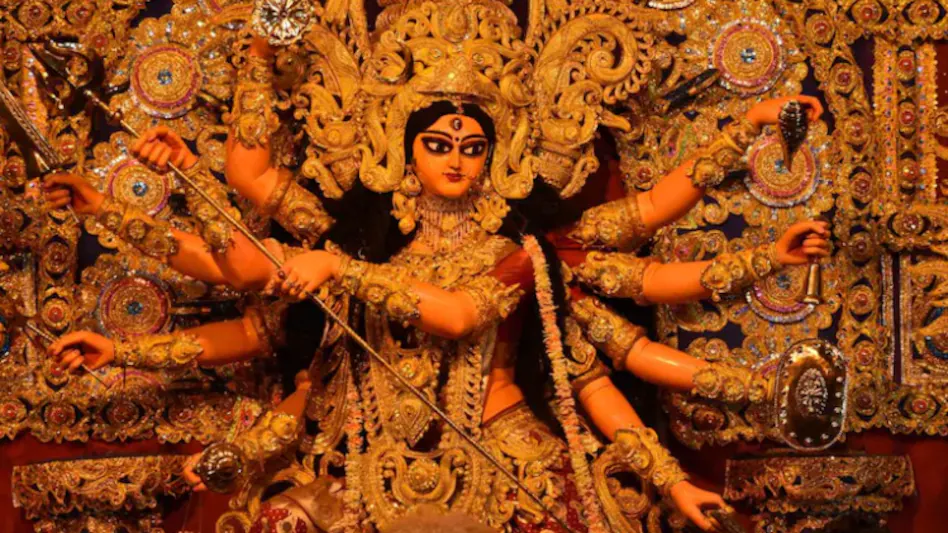
Navratri is a major Hindu festival celebrated in India, particularly in the northern and western states. The festival is dedicated to the worship of Goddess Durga, who is worshipped in her nine different forms over a period of nine days.
The word Navratri is derived from two words in Sanskrit, “nav” which means nine and “ratri” which means night, and thus the festival is also known as the “Nine Nights” festival. The festival is celebrated twice a year, once in the spring and once in the autumn.
During Navratri, people fast, perform puja (worship), and observe various rituals and customs to honor Goddess Durga and seek her blessings. Each of the nine days is associated with a different form of the goddess, and specific rituals and offerings are made to her during that day.
The festival is marked by the installation of large and elaborately decorated temporary structures called pandals, which house the idols of Goddess Durga and her family. The pandals are often designed around a specific theme, and are a major attraction for visitors.
Navratri is also marked by cultural events such as music and dance performances, including the famous Garba dance in Gujarat and the Dandiya dance in Rajasthan. Traditional foods and sweets are prepared and shared with family and friends.
The final day of Navratri is celebrated as Vijayadashami, which marks the victory of good over evil. On this day, people immerse the idols of Goddess Durga in a nearby river or lake, and celebrate with fireworks and other festivities.
Overall, Navratri is a time of joy and celebration, and is an important part of the cultural and religious heritage of India. The festival celebrates the power and grace of Goddess Durga, and is an occasion for people to come together and seek her blessings for peace, prosperity, and happiness.
7. Janmashtami
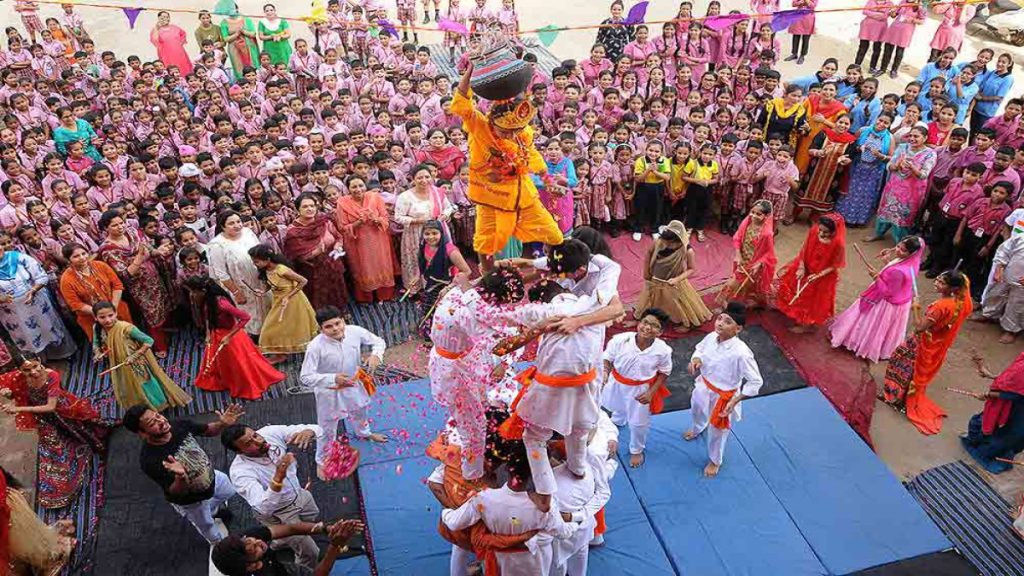
Janmashtami is a major Hindu festival celebrated in India and other parts of the world to commemorate the birth of Lord Krishna, who is one of the most revered deities in the Hindu pantheon. The festival is celebrated on the eighth day of the dark fortnight in the Hindu month of Bhadrapada, which usually falls in August or September.
On Janmashtami, devotees fast, perform puja (worship), and observe various rituals and customs to honor Lord Krishna and seek his blessings. The festival is marked by the installation of elaborately decorated idols of Lord Krishna in homes and temples, and by the recitation of hymns and prayers.
In some parts of India, such as in Mathura and Vrindavan, which are associated with the life of Lord Krishna, the festival is celebrated with great enthusiasm and fervor. Devotees participate in processions, visit temples, and perform traditional dances and music.
Janmashtami is also marked by the tradition of breaking the “dahi handi,” which is a clay pot filled with curd, milk, and other goodies, that is hung at a height. Teams of young men form human pyramids to reach the pot and break it, while the crowd cheers them on.
The festival is marked by the preparation and sharing of traditional foods and sweets, such as sweetened milk, butter, and poha, a sweetened flattened rice dish. Devotees also distribute sweets and other gifts to family and friends.
Overall, Janmashtami is a time of joy and celebration, and is an important part of the cultural and religious heritage of India. The festival celebrates the wisdom, power, and grace of Lord Krishna, and is an occasion for people to come together and seek his blessings for peace, prosperity, and happiness.
8. Raksha Bandhan

Raksha Bandhan is a popular Hindu festival celebrated in India and other parts of the Indian subcontinent to honor the bond between brothers and sisters. The festival falls on the full moon day in the Hindu month of Shravana, which usually falls in August.
On Raksha Bandhan, sisters tie a sacred thread called the “rakhi” around their brothers’ wrists, symbolizing their love and the brother’s promise to protect their sister. The rakhi is also a symbol of the bond of trust and affection between brothers and sisters.
The day begins with a traditional ritual in which sisters perform an aarti (prayer) for their brothers, and then tie the rakhi around their wrists. In return, brothers offer gifts to their sisters and make a pledge to protect and care for them. The day is marked by the exchange of gifts, sweets, and other traditional foods, and by spending time with family and friends.
Raksha Bandhan is also celebrated between friends, colleagues, and neighbors as a symbol of their bond and mutual respect. The festival is an occasion for people to come together and celebrate the enduring values of love, trust, and protection.
Overall, Raksha Bandhan is a time of joy and celebration, and is an important part of the cultural and social fabric of India. The festival celebrates the bond between brothers and sisters, and is an occasion for people to come together and strengthen their relationships with each other.
9. Mahashivratri
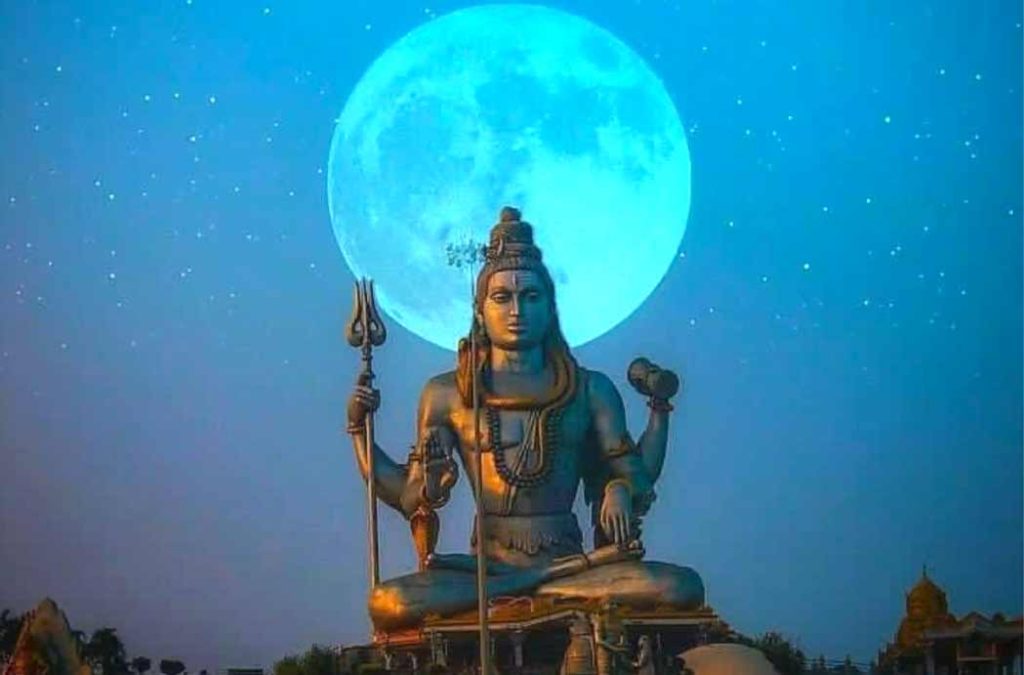
Mahashivratri is a major Hindu festival celebrated in India and other parts of the world to honor Lord Shiva, who is one of the most revered deities in the Hindu pantheon. The festival is celebrated on the 14th day of the dark fortnight in the Hindu month of Phalguna, which usually falls in February or March.
On Mahashivratri, devotees fast, perform puja (worship), and observe various rituals and customs to honor Lord Shiva and seek his blessings. The festival is marked by the installation of elaborately decorated idols of Lord Shiva in homes and temples, and by the recitation of hymns and prayers.
Devotees also offer “bilva” leaves, milk, honey, and other traditional offerings to Lord Shiva, and chant the “Om Namah Shivaya” mantra. They also perform “abhishekam,” which is the ceremonial pouring of water, milk, and other liquids over the idol of Lord Shiva as a mark of reverence.
Mahashivratri is also marked by the tradition of staying up all night, or “jagran,” in prayer and devotion to Lord Shiva. Devotees spend the night chanting hymns, performing bhajans (devotional songs), and listening to stories and discourses about Lord Shiva.
The festival is marked by the preparation and sharing of traditional foods and sweets, such as “bhang,” a drink made from cannabis leaves, and “thandai,” a sweetened milk drink. Devotees also distribute sweets and other gifts to family and friends.
Overall, Mahashivratri is a time of joy and celebration, and is an important part of the cultural and religious heritage of India. The festival celebrates the wisdom, power, and grace of Lord Shiva, and is an occasion for people to come together and seek his blessings for peace, prosperity, and happiness.
10. Baisakhi

Baisakhi is a major harvest festival and a religious holiday in the Sikh community celebrated on April 13th or 14th each year. The festival marks the beginning of the Sikh New Year and commemorates the formation of Khalsa Panth by Guru Gobind Singh in 1699.
Baisakhi is primarily celebrated in the Indian state of Punjab, which is known for its rich agricultural heritage. On this day, farmers offer prayers and thanksgiving to God for a bountiful harvest, and seek his blessings for good crops in the upcoming season.
The day begins with devotees taking a dip in rivers or other water bodies as a symbolic cleansing of the soul. The day is marked by the performance of the traditional “bhangra” dance and the “giddha” dance by men and women respectively, in colorful traditional attire.
The main attraction of the festival is the grand processions, known as “Nagar Kirtans”, in which the Sikh holy book, the Guru Granth Sahib, is taken out in a decorated palanquin and carried through the streets. The processions are accompanied by the singing of hymns, the playing of musical instruments, and the offering of prayers and thanks.
The festival is also marked by the preparation and sharing of traditional foods, such as “halwa puri,” “chole bhature,” and “lassi,” a refreshing yogurt-based drink.
Overall, Baisakhi is a time of joy and celebration, and is an important part of the cultural and religious heritage of the Sikh community. The festival celebrates the spirit of thanksgiving and gratitude, and is an occasion for people to come together and share their joys and blessings with each other.

2 comments
Your article helped me a lot, is there any more related content? Thanks!
Your posts always leave me feeling motivated and empowered You have a gift for inspiring others and it’s evident in your writing